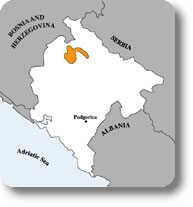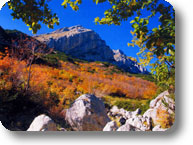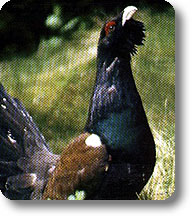
 |
Durmitor National Park |
Protected Area |
|
 |
Entrance Fee to NP: 1.00 Euro per person |
|
|

|
The landscapes of Durmitor, the rare and authentic work of nature, owing to its beauty and undamagedness, were proclaimed a national park in 1952. Situated in the northwest of Montenegro, Park occupies a larger area of the Durmitor’s massif with the canyons of the Tara, Draga and Susica rivers and upper part of the canyon valley of the river Komarnica, covering an area of 39,000 hectares. The basic distinction of the geographical relief on the Durmitor’s region is a vast plateau at 1,500 metres a.s.l. carved by the deep canyon valleys and from where the impressive mountain peaks are raised, out of which 48 are above 2,000 metres and among them the highest ”Bobotov kuk“ with 2,525 metres above sea level. 18 glacial lakes called ”the mountain eyes“, at the altitude above 1,500 metres, give a special charm to the beauty of the Durmitor’s massif. The biggest and the most attractive is Crno jezero (Black Lake). Besides the beauty of the Lake’s basin and its glittering water surface, the magnificence of the landscape is contributed by the broad woodland and Medjed (Bear) peak proudly risen upon it. It is 2 km far from a little mountain town Zabljak, the winter tourist centre of Montenegro. In the range of the Durmitor’s hydrographic pearls, Skrcka jezera (Skrcka lakes) are distinguished by its beauty and wilderness; binded by ice and snow till the middle of July - Zeleni vir and Modro jezero and Zmijinje and Riblje jezero (Fish Lake) slept away among endless meadows. Clean fast rivers are also among the most beautiful ornaments of the Park which lend to this area the astonishing canyon valleys. One is particularly impressed by the river Tara, its beauty and the flowing water streams as well as by the depth and the canyon landscapes making of it one of the most beautiful in the world. By the richness of flora and fauna, complexity of its ecosystems, existence of above 1,300 species of vascular plants denoting the exceptional concentration of the great number of endemic and relic species, Durmitor represents the magnificent natural value and lasting inspiration for scientists and nature lovers. It has lapped on its territory the real natural rarities like the forests of black pines on the locality at Crna poda which grand trunks up to 50 metres high resist the time for the entire 400 years. The Durmitor National Park abounds in considerable number of the cultural monuments dating from the ancient times up to now. The mediaeval monuments are the most characteristic: ruins of the town and fortifications, bridges and watch-towers, necropolises with tombstones - ”stecci“ and monastery complexes in the valley of the river Tara. |
International Recognitions |
|
| All the richness of the natural beauties, landscape and cultural values of Durmitor and the river Tara contributed to the National Park Durmitor to inscribe in the List of the World’s cultural and natural heritage on the decision of The International Committee for World’s cultural and natural heritage, in Paris, in 1980, while the river Tara and its canyon valley were, under UNESCO’s ”Man and Biosphere“ programme, enrolled in the World’s ecological biosphere reserves in 1977. | |
Flora |
|
 |
The exceptional wealth of the Durmitor’s vascular flora represents the natural phenomenon of the particular scientific, above all phytogeographical and ecological interest. On the Durmitor’s territory including Tara and Piva canyons, there are 1,325 species identified and classified in 484 genders and 129 families. Durmitor is one of the most important refuge centres of the arctic-tertiary high mountainous flora. The old forms - endemic and endemic-relic species and genders represent that in a best way. Related to the total number of endemic flora of the Durmitor massif, up to 77% belong to the high mountainous endemic species (above 1,500m a.s.l.) which means that 122 endemic species are collected in 70 genders and 30 families. |
Fauna |
|
 |
By the ecological and bio-geographical division, the territory of Durmitor, in the whole, belongs to the mountain area of the north Dinarids what reflected on the composition of the animal world. Besides the geographical factors, the diversity of fauna is also influenced by orographic, climatic, historical and anthropological factors which stipulated the present composition of fauna as well as the existence of endemic-relict tertiary and glacial species. In accordance with these, the live world of Durmitor belongs partly to mountainous and partly to high mountainous ecosystem and with evident presence of forms which belong more to the plain than to the mountainous ecosystems and the Mediterranean influence on fauna is, considerably, present. |